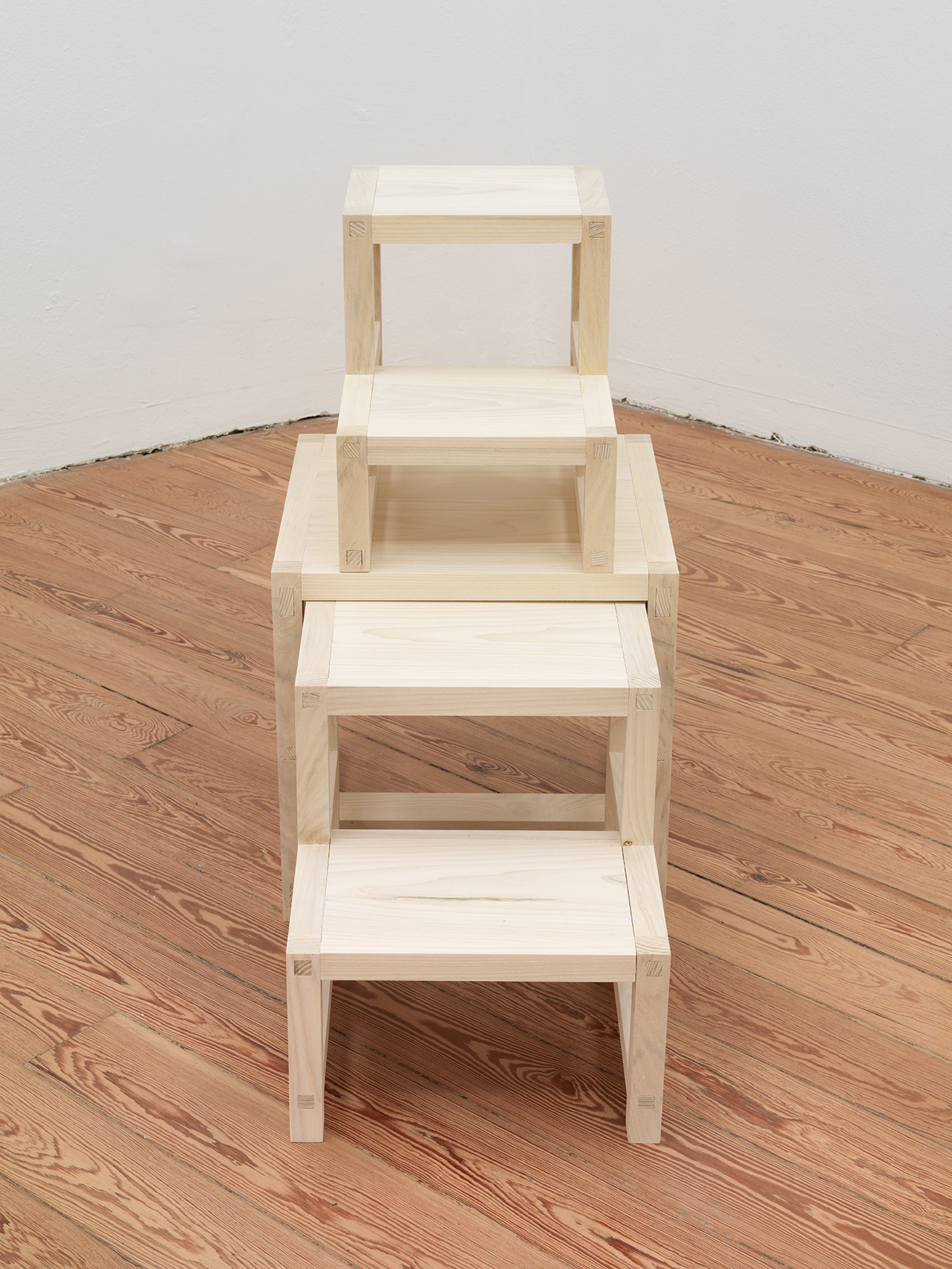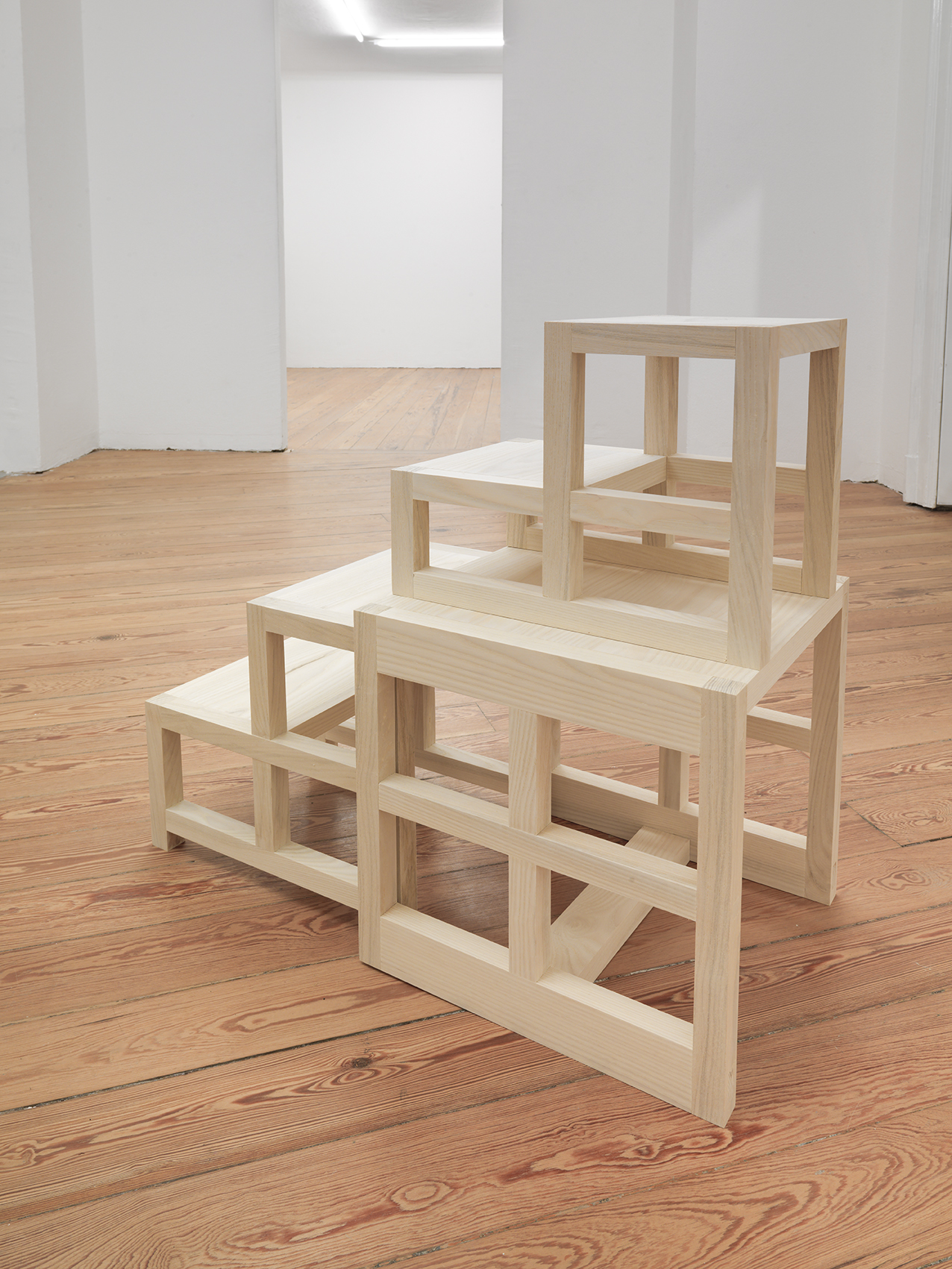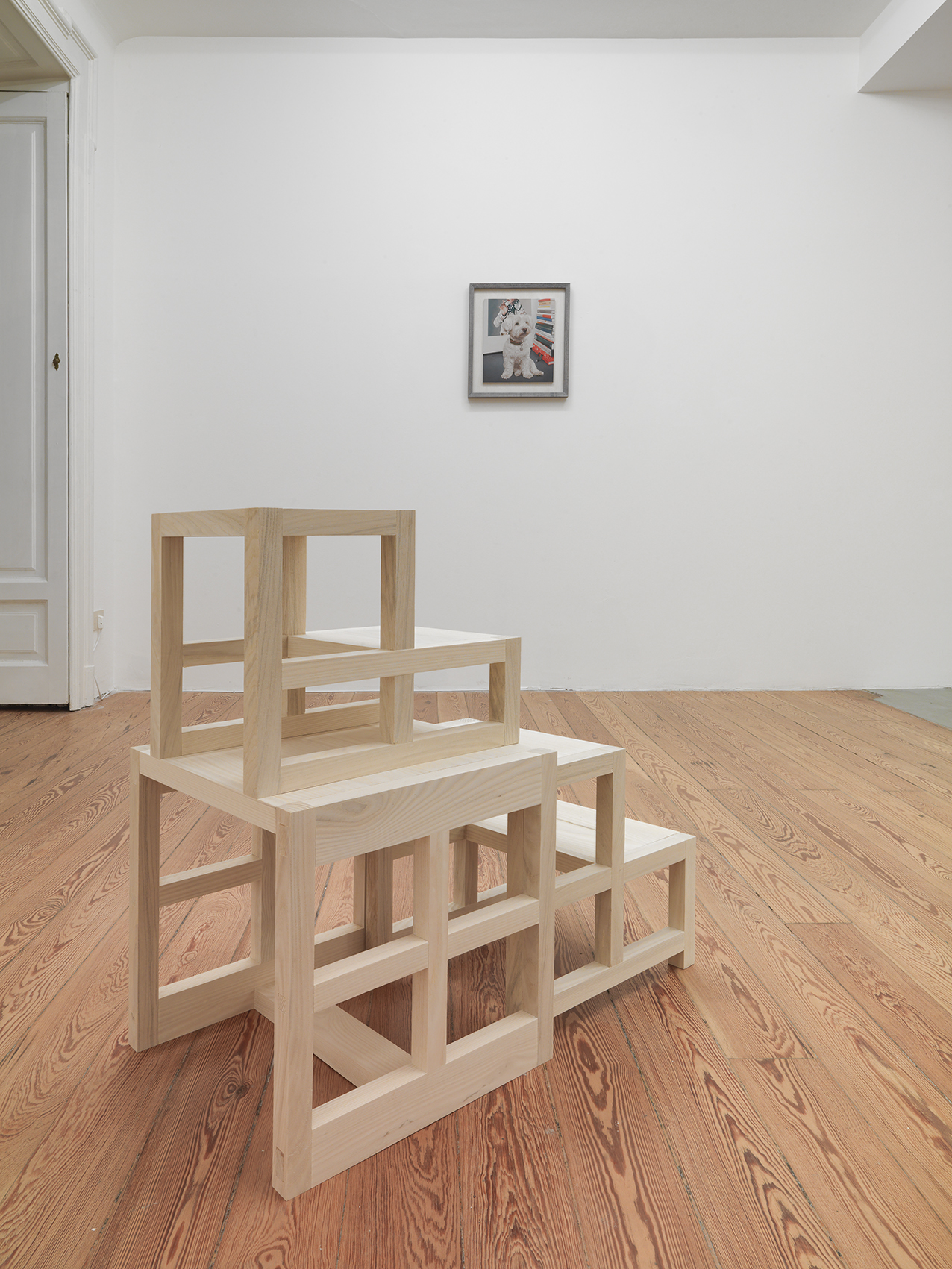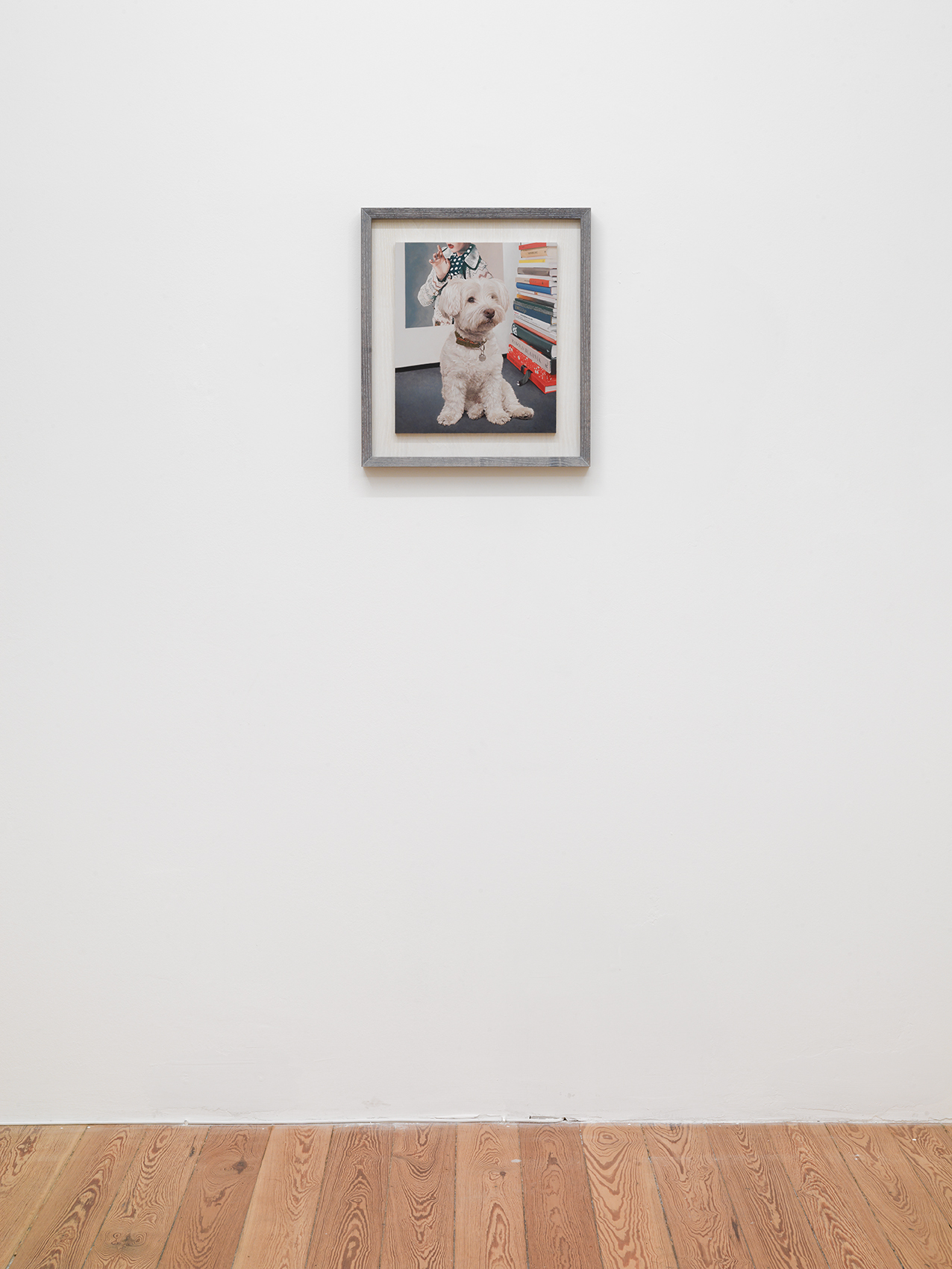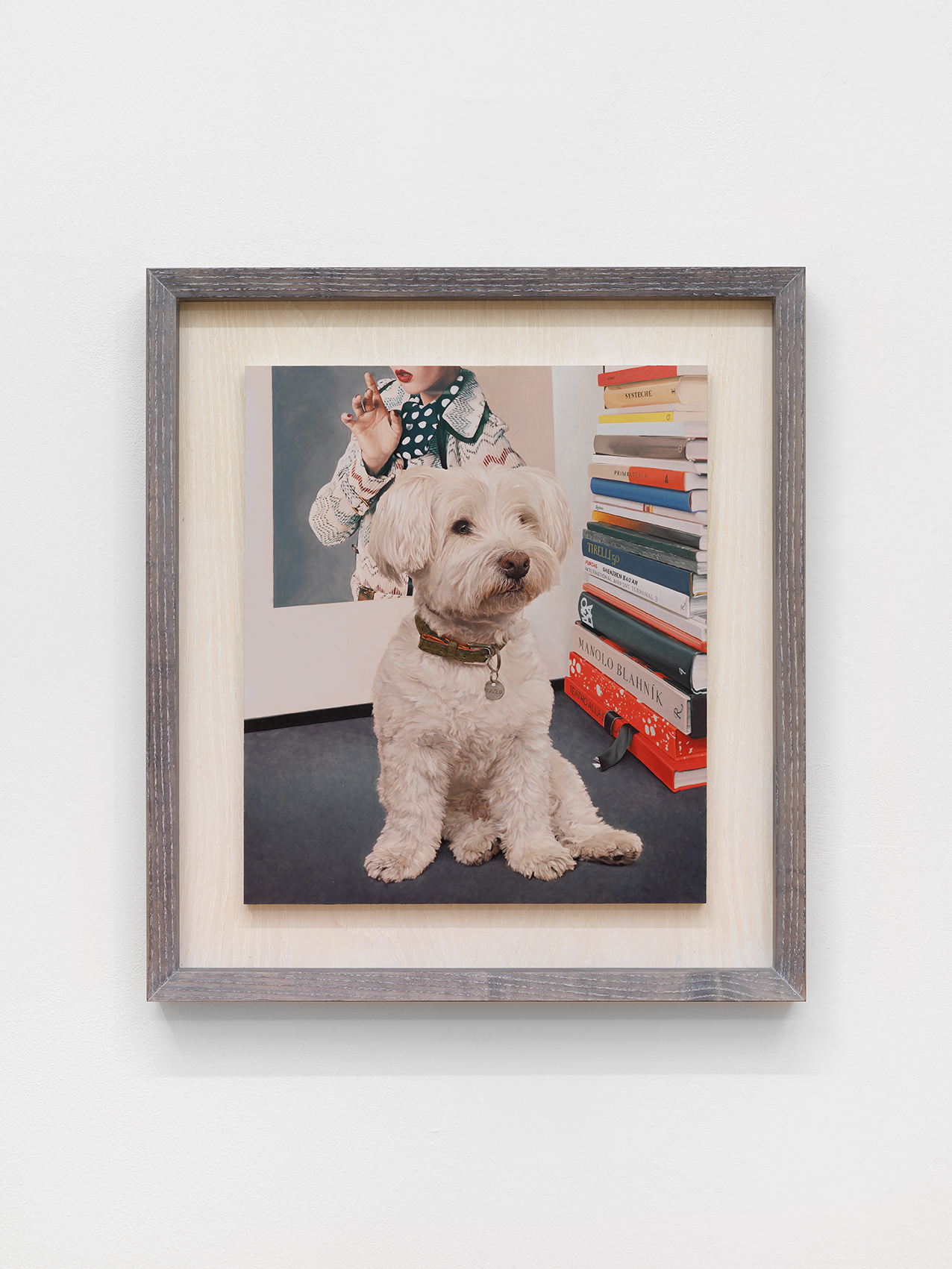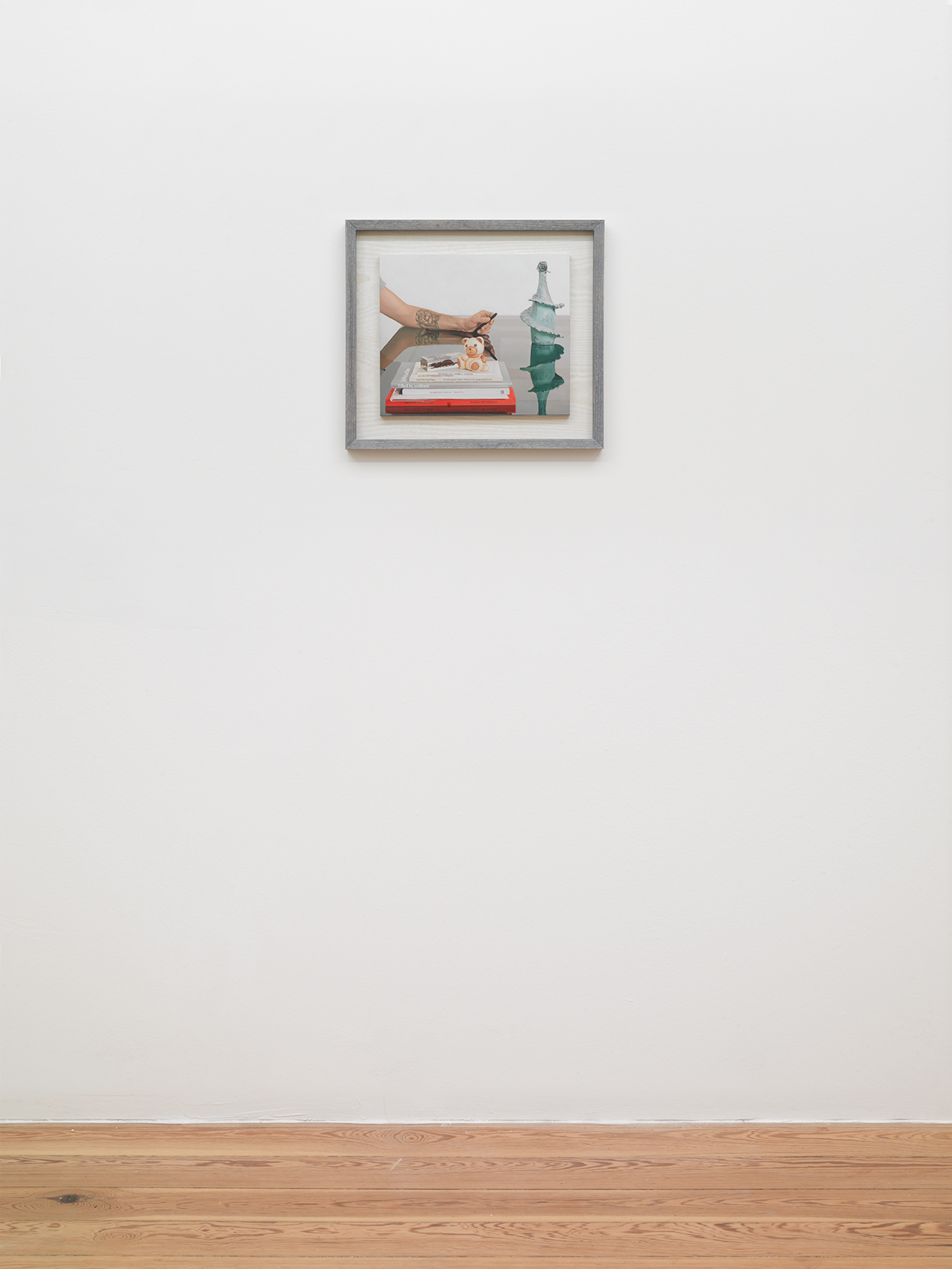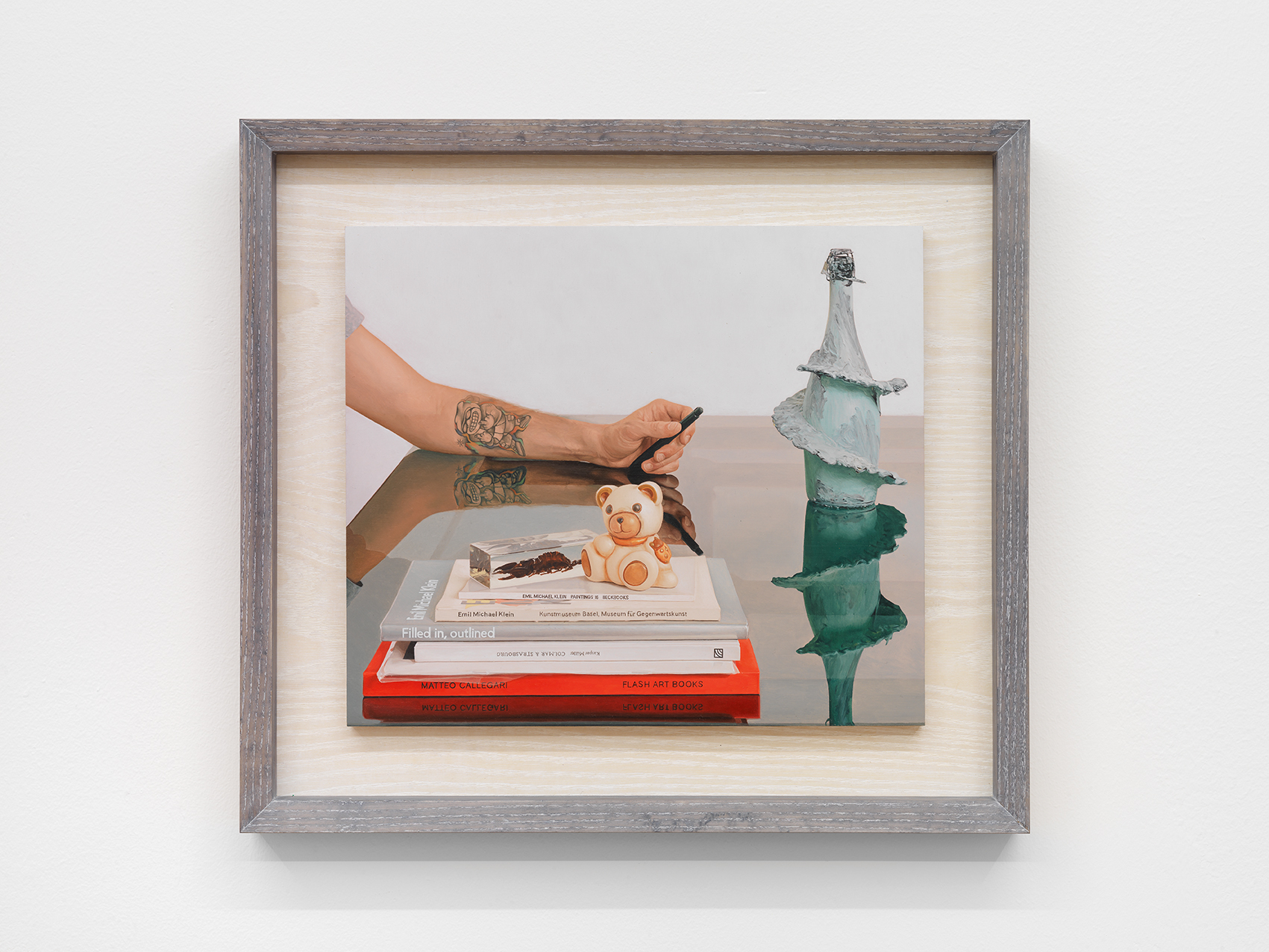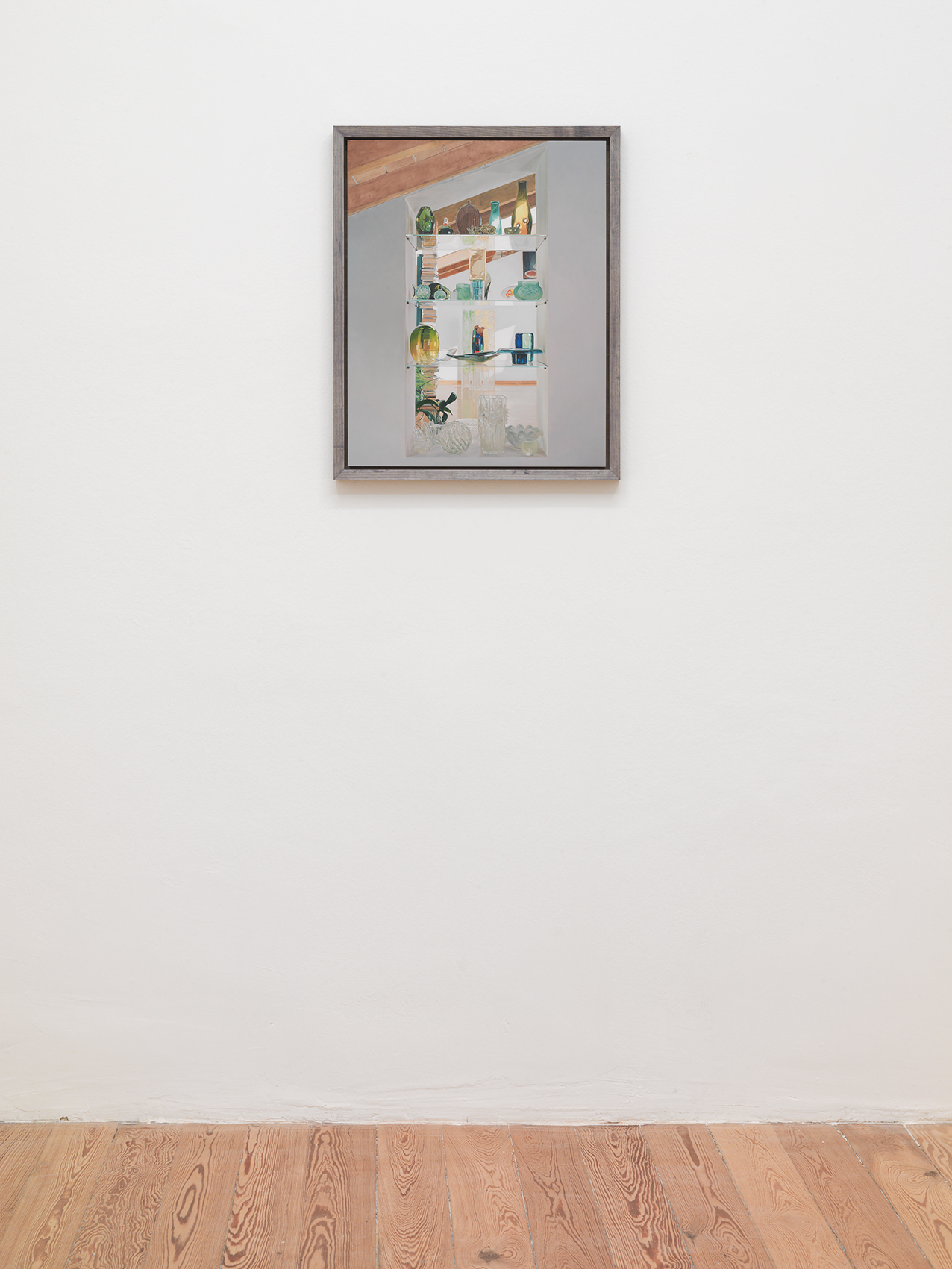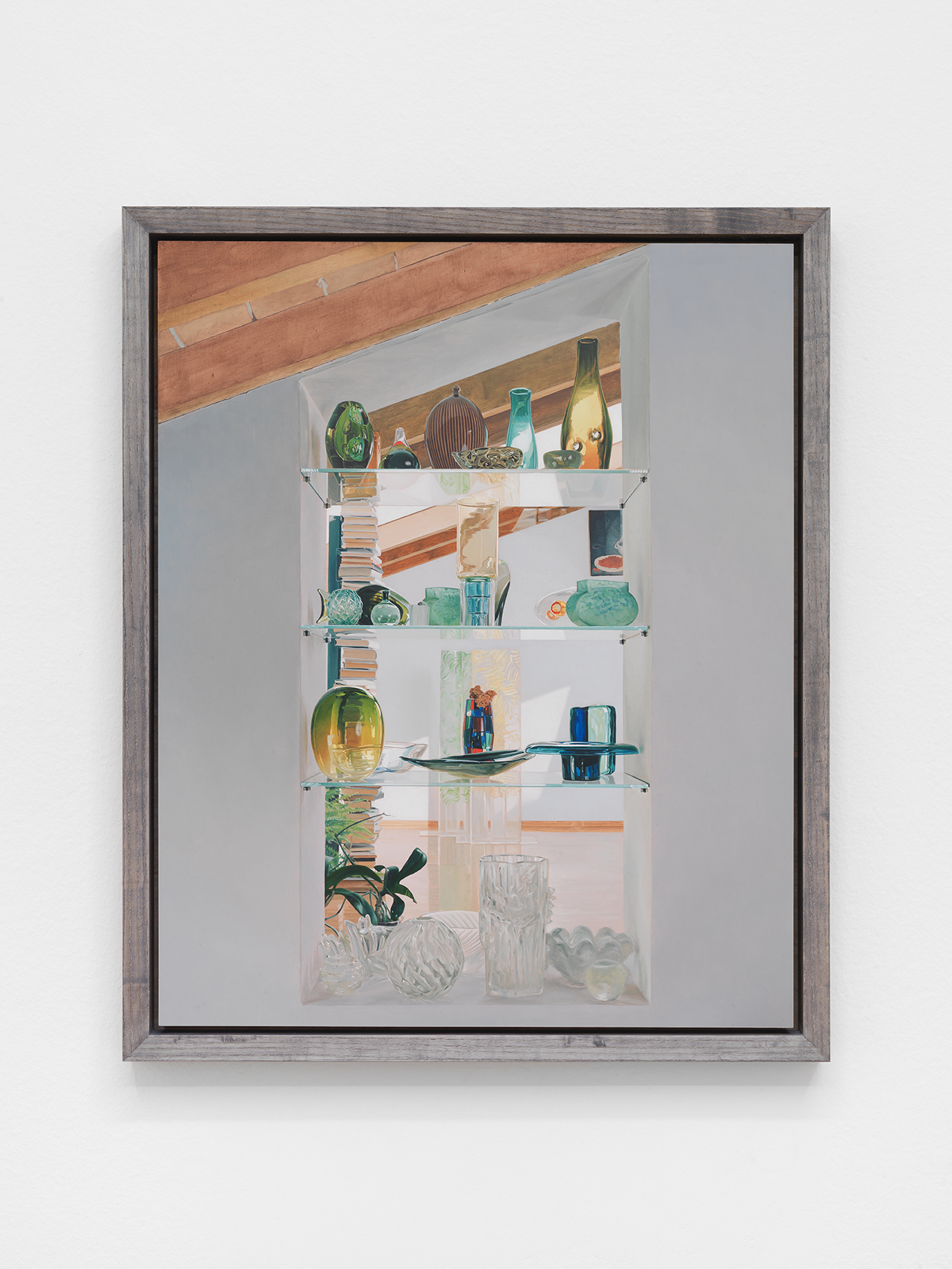Matthew Watson
Surplus to Requirements
November 25 - December 23, 2016
Matthew Watson, Surplus to requirements, 2016, installation view, Galleria Federico Vavassori, Milan
Matthew Watson
Step Ladder (nesting), 2017
Bleached ash
72 x 79 x 41 cm
Matthew Watson
Step Ladder (nesting), 2017
Bleached ash
72 x 79 x 41 cm
(alternate view)
Matthew Watson, Surplus to requirements, 2016, installation view, Galleria Federico Vavassori, Milan
Matthew Watson, Surplus to requirements, 2016, installation view, Galleria Federico Vavassori, Milan
Matthew Watson
A commission to paint a dog, photographed at an office in Milan, July 19 2016 , 2016
Oil on copper in artist’s frame
48 x 42,5 cm
Matthew Watson, Surplus to requirements, 2016, installation view, Galleria Federico Vavassori, Milan
Matthew Watson
A commission to paint a tattoo, photographed at a gallery in Milan, July 21 2016, 2016
Oil on copper in artist’s frame
42,5 x 48 cm
Matthew Watson, Surplus to requirements, 2016, installation view, Galleria Federico Vavassori, Milan
Matthew Watson
A commission to paint an interior, photographed at a residence in Brescia, July 20 2016, 2016
Oil on copper in artist’s frame
62 x 51 cm
- 2025
-
2024
-
Giangiacomo Rossetti
Squeeze
November 29, 2024 - January 10, 2025 -
Ganz kleine
November 6 - November 22, 2024 -
Kaspar Müller
when we turn, we reappear
September 18 - October 18, 2024 -
Gianni Piacentino
June 25 - July 25, 2024 -
Vincent Murnaghan
Tuscan Landscape Painting
May 22 - June 18, 2024 -
claude rutault
March 12 - April 26, 2024
-
-
2023
-
The 3-second rule of thumb
Curated by Kaspar Müller
December 15, 2023 - February 2, 2024 -
Daniele Milvio
Le Faremo Sapere.
September 21 - October 27, 2023 -
Charlemagne Palestine, C'ERAA UNAAA VOLTAAA CHARLEWORLDDD
June 6 - July 7, 2023 -
Bill Hayden
café Uranus
May 4 - 31, 2023 -
Gianni Piacentino
March 22 - April 23, 2023
-
Emil Michael Klein
January 17 - February 17, 2023
-
-
2022
-
Osama Al Rayyan
knights
November 9 - December 16, 2022 -
Rochelle Goldberg
Ghost Centrale
September 16 - October 21, 2022 -
Beatrice Marchi
Who crushed the Evil Turtle?
June 8 - July 29, 2022 -
Kaspar Müller
Maintenance 2
March 30 - May 13, 2022 -
6 Bagatelles
Osama Al Rayyan
Beatrice Marchi
Daniel Murnaghan
Matthew Pang
Giangiacomo Rossetti
Cinzia RuggeriFebruary 15 - March 18, 2022
-
- 2021
-
2020
-
PaJaMa (Paul Cadmus, Jared French, Margaret Hoening French)
September 25 - November 15, 2020
-
Jared Madere
In the back of the restaurant I made him kiss the ring: Haunted House in the Key of New Years
Paths to G-ddess~ Tiny Dick Timmy Ricochet~ Live from the Geomancer’s Clit Ring
You say one thing and everyone acts like you don’t mean the opposite of it at the same time tooFebruary 13 - March 27, 2020
-
-
2019
-
Renata Boero
Tempo e Tempi
November 15, 2019 - January 10, 2020 -
Doriana Chiarini
IN GRANDE! Scultura a dismisura
Curated by Mariuccia CasadioSeptember 18 - October 31, 2019
-
Cinzia Ruggeri
la règle du jeu?
June 25 - August 9, 2019 -
Genoveva Filipovic
May 14 - June 20, 2019 -
Emil Michael Klein
Curtains
March 15 - April 19, 2019 -
Daniel Murnaghan
February 8 - March 9, 2019
-
-
2018
-
Dario Guccio
Urnas plebeyas, túmulos reales
December 14, 2018 - January 25, 2019 -
Michael Pollard, Eric Schmid
Life is good
October 26 - November 24, 2018 -
Daniele Milvio
A Milano non si usa
September 14 - October 12, 2018 -
Tra l'inquietudine e il martello
July 16 - August 11, 2018 -
Rochelle Goldberg
1000 "emotions"
May 25 - June 30, 2018 -
Green Tea Gallery at Federico Vavassori
Amore Atomico di Amore di Lava
Curated by United BrothersApril 18 - May 19, 2018
-
Bill Hayden and Greg Parma Smith
Legend of Festival and Enclosure
March 16 - April 15, 2018 -
Cinzia Ruggeri
Umbratile con Brio
Curated by Mariuccia Casadio
February 9 - March 10, 2018
-
-
2017
-
Kaspar Müller
Maintenance
December 21, 2017 - January 27, 2018 -
Lisa Ponti
IL
FOGLIO
È UNA STANZA
CHIUSA
MA
MERAVIGLIOSASeptember 15 - October 14, 2017
-
Genoveva Filipovic & Daniel Murnaghan
May 25 - July 1, 2017 -
Rosa Aiello
27 seasons
March 29 - April 29, 2017 -
Giangiacomo Rossetti
KRIS
February 16 - March 18, 2017 -
Matthias Gabi
January 12 - February 11, 2017
-
-
2016
-
Matthew Watson
Surplus to Requirements
November 25 - December 23, 2016 -
Dario Guccio feat. Andrea Cleopatria
Referendum sull'aeroplano
October 25 - November 19, 2016 -
Erika Landström
CONTROL I'M HER
September 9 - October 8, 2016 -
Benjamin Horns
May 25 - June 25, 2016 -
Emil Michael Klein
April 06 - May 14, 2016
-
-
2015
-
Daniele Milvio
Cacafoco
November 9 – December 5, 2015 -
Matteo Callegari
September 17 – October 24, 2015 -
Rochelle Goldberg
The Cannibal Actif
June 5 – July 4, 2015 -
Mélanie Matranga / Oliver Payne
Organized by Fredi Fischli and Niels Olsen
April 10 – May 9, 2015 -
Dario Guccio
Hammer, Chewing Gum, Evasion, Destruction
January 16 – February 14, 2015
-
- 2014
- 2013
- 2012
- 2011
MATTHEW WATSON
SURPLUS TO REQUIREMENTS
November 25 - December 23, 2016
Scholia:
1) Robert Musil negotiates the common border between subject and object. He terms this “the Other condition”, where “one participates in things (understands their language). In this condition understanding is not impersonal (objective), but extremely personal, like an agreement between subject and object.” He characterizes this condition as a “de-reification of the self as of the world”.
2) Reification indicates the passage from one state to another. The thing that is reified, the substance that is made into a thing, is the very matter that regulates our being-in-the-world. Reification is the state that puts emphasis on the “among”, puts the human animal “among” the objects of the world.
3) Louis Althusser discusses the abstraction of the relations between humans and objects through his analysis of the painter Cremonini. “This does not mean it is possible to paint living conditions and social relations, but it is possible, through their objects, to depict the determinate absence which governs them... To see these relations on the surface of a painting is simultaneously to enter into other relations: those that obtain between the artist and his work, or rather between the work and it’s artist.”
4) Two famous myths of subject formation are found in Narcissus and Pygmalion. First, the myth of Narcissus, which there is no need to retell, as it has been too often cited as the proof of so called narcissism. As Peter Sloderdijk points out, “glass mirrors of the type today have only existed since c. 1500, and initially only in Venice. Supplying large parts of populations with mirrors would not be complete in the First world until the middle of the 20th Century. Only in a mirror saturated culture could people have believed that for each individual, looking into ones own mirror image realized a primal form of self-relation.” For Sloterdijk it is not through our own reflection that the self is formed, but in looking into the face of another human, and knowing that they are looking back at you. People return to themselves by way of the sight of the other. The social imago situates our experience of the being-in-the-world.
In turning to the myth of Pygmalion, we are faced with the story of a sculptor who fell in love with his own creation, a marble sculpture of a woman. Unlike Narcissus, who was punished for self-eroticism, Pygmalion was rewarded for his mad love for an inanimate object, and thus Aphrodite granted life to his statue, they wed, had a child, and lived happily ever after. It’s a strange fable for the relationship between humans and things, yet one that points to the muddled distance between subjects and objects.
5) As Giorgio Agamben says, “things are not outside of us, in measurable external space, like neutral objects of use and exchange, rather they open to us the original place solely from which the experience of measurable external space becomes possible... Like the fetish, like the toy, things are not properly anywhere, because their place is found on this side of objects and beyond the human in a zone that is no longer objective or subjective, neither personal nor impersonal, neither material nor immaterial, but where we find ourselves suddenly facing these apparently so simple unknowns: the human, the thing.”

